Top speed 744 km/h Length 8.78 m First flight June 1947 | Wingspan 9.2 m Number of seats 2 | |
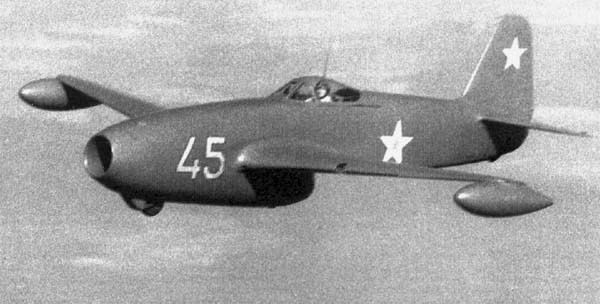 | ||
Manufacturer | ||
The Yakovlev Yak-17 (Russian: Як-17, USAF/DOD designation Type 16, NATO reporting name "Feather") was an early Soviet jet fighter. It was developed from the Yak-15, the primary difference being tricycle landing gear. The trainer version, known as the Yak-17UTI (NATO reporting name "Magnet"), was the only Soviet jet trainer of the 1940s. Both aircraft were exported in small numbers and the Yak-17 was soon replaced by the far superior Mikoyan-Gurevich MiG-15 beginning in 1950.
Contents
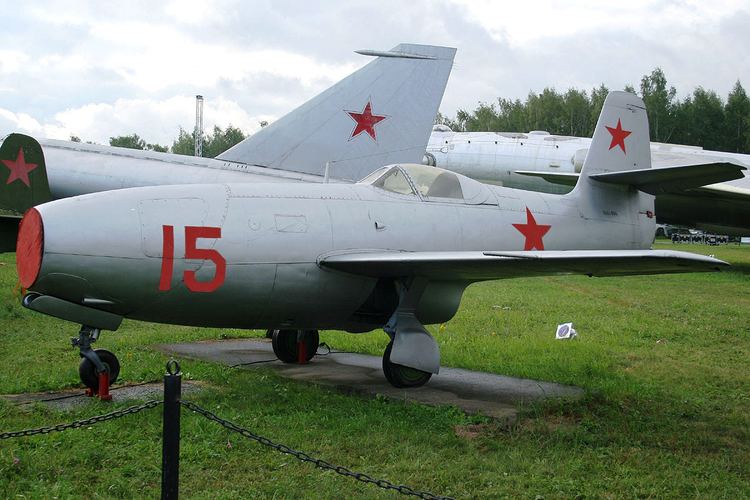
Design and development

After the state acceptance trials of the Yak-15 in May 1947 recommended that the aircraft be modified with a tricycle landing gear more suitable for jet-powered aircraft, the Yakovlev design bureau (OKB) began design of the Yak-15U or Yak-15U-RD-10 (uloochshenny - improved).
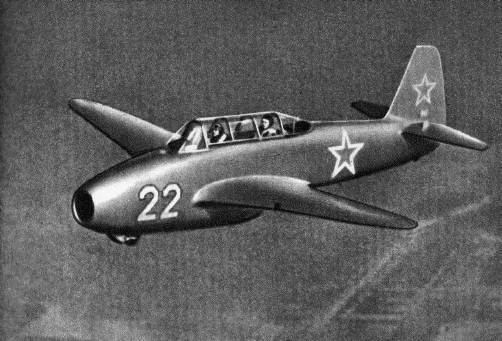
The main gear had to be redesigned to place the wheels behind the aircraft's center of gravity. The main gear was moved behind the front spar, and when retracted filled most of the space between the spars. This caused a major redesign of the fuel tanks and reduced their capacity to just 680 liters (150 gallons). This necessitated the addition of two 200-liter (44 imp gal; 53 U.S. gal) drop tanks, which hung under the tip of each wing. The addition of the tip tanks required a redesign of the structure of the wing so that the aircraft could still maintain a load bearing of 12g. The vertical stabilizer was enlarged and a periscope was also added above the windscreen on most series aircraft. Armament, systems, and equipment were virtually unchanged.
Operational history
The Yak-17 was first publicly displayed at the Soviet Aviation Day of 1949, at Tushino.
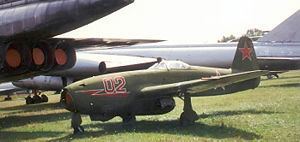
In operation, the Yak-17 had most of the same faults as its predecessor, including relatively low speed and range, and an unreliable engine (still based upon the German Junkers Jumo 004) with a complicated starting procedure. On the other hand, its handling was very simple, and similar to popular propeller fighters such as the Yak-3 and Yak-9. This made it an excellent transitional machine to jet fighters. As a result, the trainer version Yak-17UTI accounted for the majority of production, and almost all series-built Yak-17s were of this tandem, dual-control trainer version, which filled an important need in all Soviet air arms.
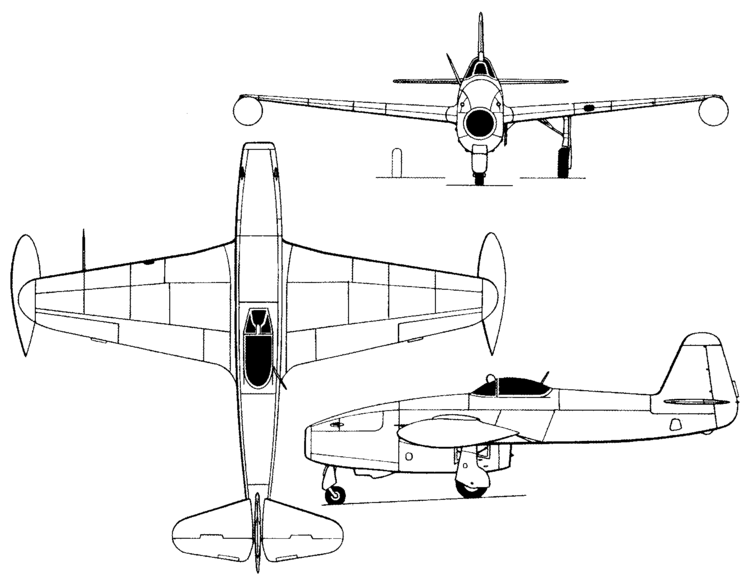
Surviving Yak-17s can be viewed at the Central Air Force Museum at Monino, outside of Moscow and the Prague Aviation Museum at Kbely Airport, near Prague, Czech Republic. Surviving Yak-17UTIs include one example at the Polish Aviation Museum near Kraków and the Chinese Aviation Museum, near Beijing.
Yak-17UTI
The most-produced variant of the Yak-17, the Yak-17UTI was a tandem-seat, dual-control trainer.
Fuel capacity was greatly reduced, owing to the elimination of the wingtip tanks. Initially it was planned to include a single UBS machine gun, but this was omitted on series-produced aircraft. In the U.S., this aircraft was known as the "Type 26", and given the ASCC reporting name "Magnet".
Production began in 1948. Total production of all Yak-15 and Yak-17 variants was 717, with the Yak-17UTI the most numerous of all variants of this early Soviet jet.
Variants
Operators
Bulgaria
People's Republic of China
Czechoslovakia
Poland
Romania
Soviet Union
Specifications (Yak-17)
Data from Early Soviet Jet Fighters
General characteristics
Performance
Armament
